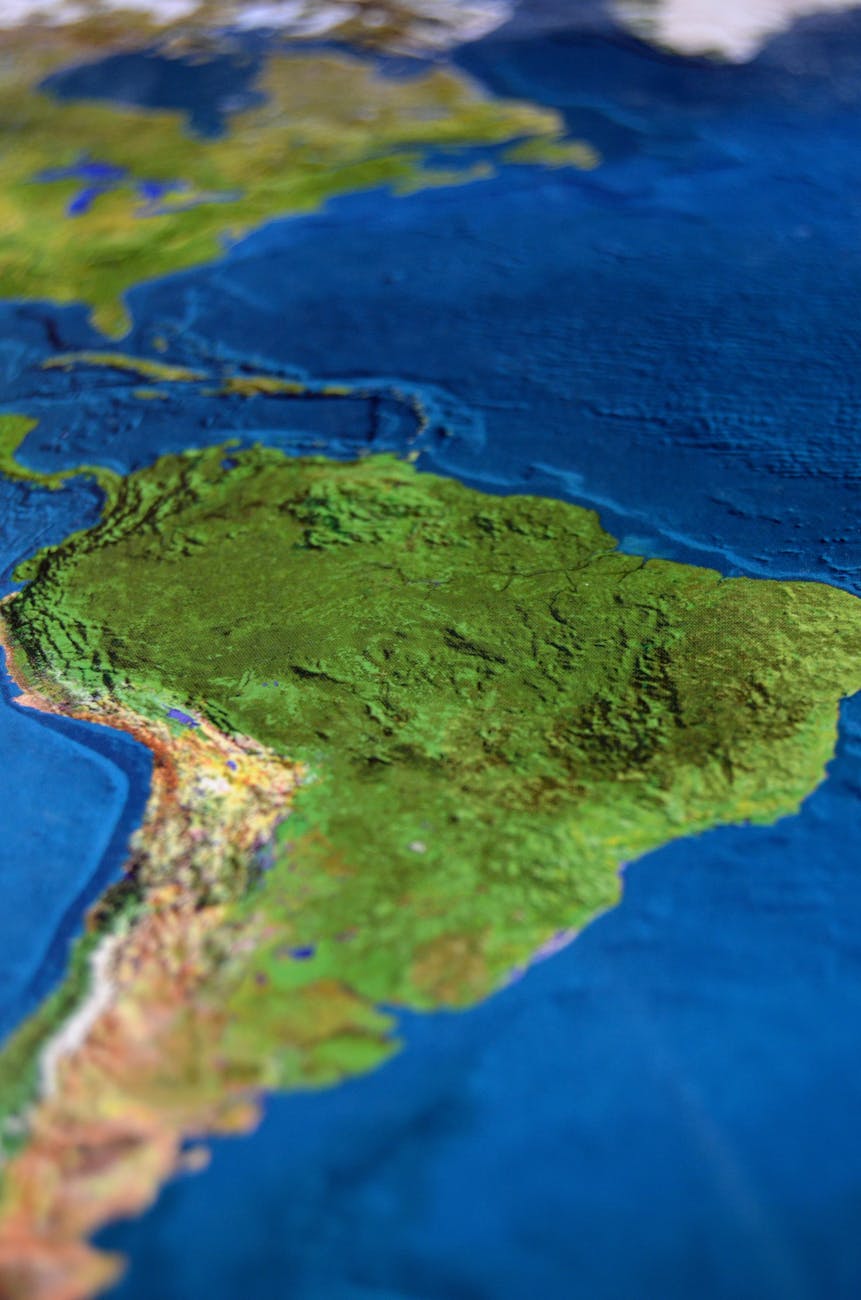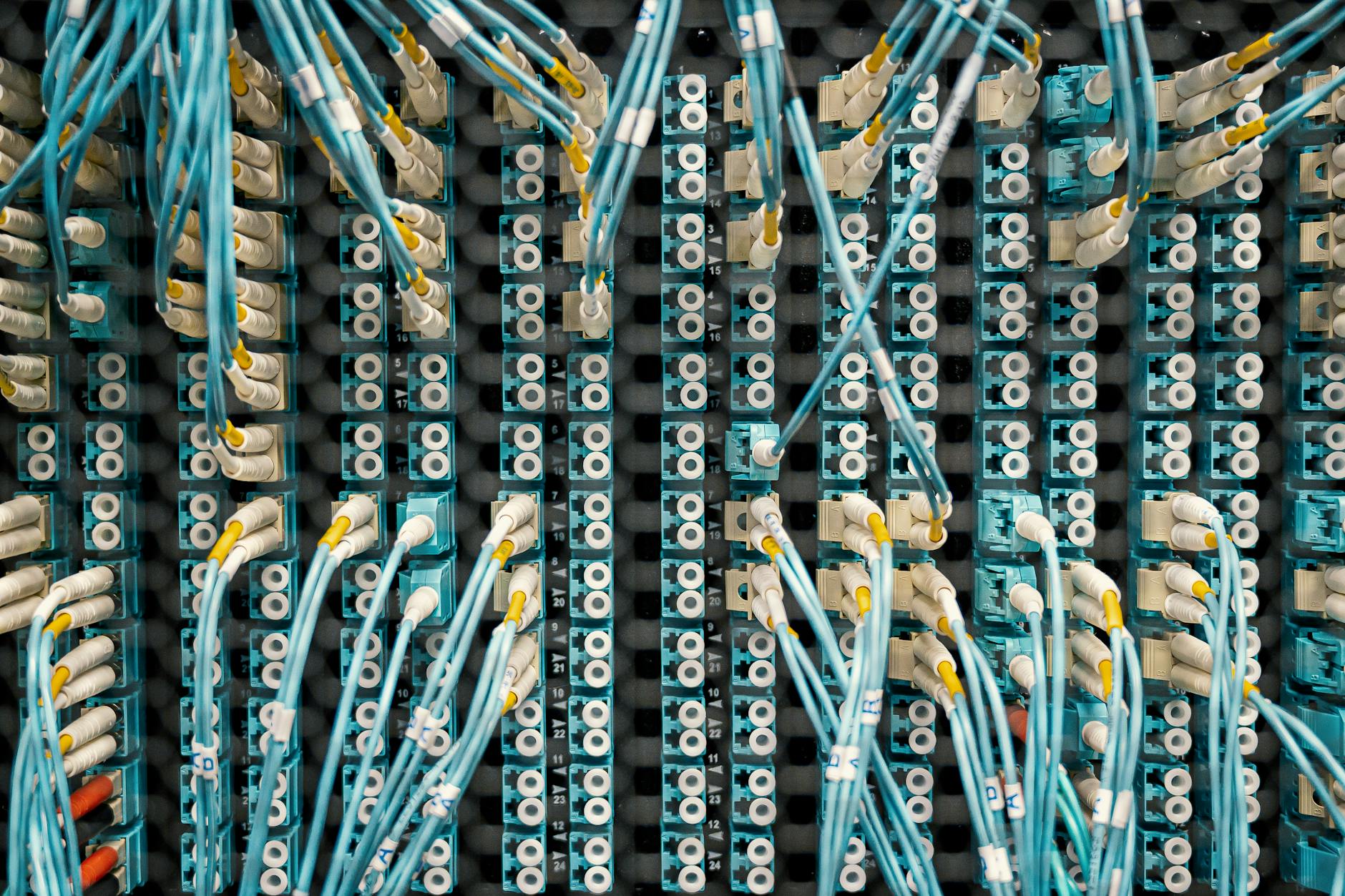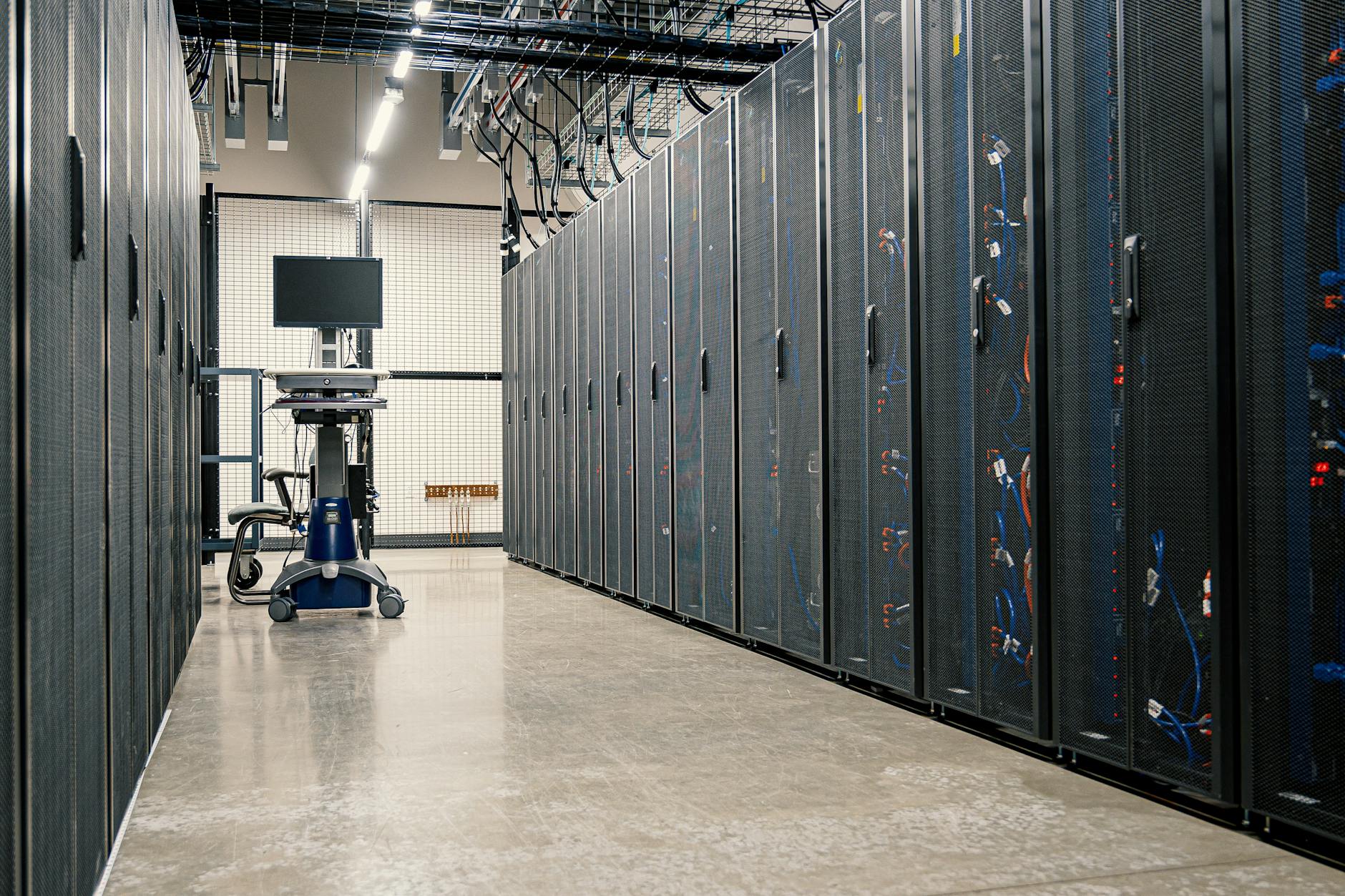South American Internet Connectivity
Internet Connectivity in South America
Overview of Internet Connectivity
We’re diving into the current scene of internet connectivity in South America, pointing out the vital elements and figures. By January 2024, Latin America had an internet penetration rate of 74.63 percent. South America alone flaunted a higher rate at 80.6 percent, leaving the Caribbean at just 68.4 percent, according to the stats from Statista.
South American countries are putting in work to upgrade their internet infrastructure to level up their connectivity game. Pumping funds into digital infrastructure isn’t just a want—it’s a need for keeping up and boosting those internet penetration numbers, impacting everything from the economy to social spheres. For a deeper dive into digital infrastructure, check out digital infrastructure in Latin America.
Disparities in Broadband Speed
Even with progress aplenty, big gaps in broadband speed still exist across South America. How fast your internet zooms past depends a lot on where you are and how much tech you’re packing. Here’s a look at the average download speeds across select South American countries as of June 2024:
| Country | Average Download Speed (Mbps) |
|---|---|
| Argentina | 42.3 |
| Brazil | 35.8 |
| Chile | 62.7 |
| Colombia | 28.5 |
| Ecuador | 25.1 |
| Uruguay | 50.6 |
This info’s from Statista.
Uruguay and Chile are cruising along with faster speeds, but places like Colombia and Ecuador don’t have it as smooth. These differences point to the crucial need for specific infrastructure development and investment to share high-speed internet goodness fairly across the region.
Several things are stirring these speed variations—how much international bandwidth is needed, how sturdy the infrastructure is, and even the land’s geography. Since 2017, countries like Ecuador and Uruguay have seen a growth boom of over 45% yearly in the thirst for international bandwidth (LACNIC Blog).
Get more into the telecom happenings by visiting broadband penetration in South America and telecommunications industry in South America.
Grasping and fixing these broadband gaps matters big time for making the South American web experience its best. If you’re curious about the scene, you might want to explore the South America data center market.
Internet Penetration Rates
Internet access across South America is like a patchwork quilt, with some areas flaunting high connectivity while others lag behind. Knowing where these gaps are helps us target efforts to improve access and make the digital world a more even playing field.
Variances in Household Penetration
Zooming in on South American households, internet access is far from uniform. Take Colombia in 2023, for example. Depending on where you lived, getting online could be a breeze or a battle (Statista). This uneven spread shows why regional strategies and some serious investment in infrastructure are crucial.
| Country | Year | Urban Penetration (%) | Rural Penetration (%) |
|---|---|---|---|
| Colombia | 2023 | 75 | 25 |
| Mexico | 2023 | 80 | 30 |
| Peru | 2022 | 70 | 20 |
Urban vs. Non-Urban Disparities
The divide between city slickers and countryside folks in South America when it comes to internet access is anything but small. Mexican cities often enjoy robust online connections, while its rural regions yearn for similar opportunities (Statista). Meanwhile, Peru’s journey from 2018 to 2022 paints a similar picture, marking a persistent city-countryside gap (Statista).
Urban areas rake in the digital goods thanks to solid infrastructure and more funds flowing their way. Yet, rural folks often hit connectivity roadblocks – a scenario not unfamiliar elsewhere. In the U.S., a Pew Research Center study found only 29% of rural adults thought speedy internet access should be on Uncle Sam’s to-do list, compared to half of the city dwellers.
Solving these puzzles needs some teamwork magic. Connections like those forming between Uruguay, Argentina, and Brazil show promise, as they work towards better regional network traffic (LACNIC Blog). These moves are key to shrinking the digital gap and boosting internet availability across the board.
Check out more on digital infrastructure in Latin America, the buzz around broadband penetration in South America, and developments in the South America data center market to get a fuller picture of these dynamics.
Mobile Internet Trends
When we talk about South American internet connectivity, it’s impossible to sidestep the buzz around mobile internet and its growth pains. Here, we’re diving into the ups and downs of mobile data use and the issues that come with it.
Growth in Mobile Data Traffic
Folks in Latin America are jumping on the mobile data train fast. We’re not just talking a little growth, it’s a full-blown boom. With more people leaning into mobile internet, projections show a massive increase in data traffic from 2022 to 2029, according to Statista. It’s a clear picture of the shift to mobile-first internet.
There’s big money being poured into 4G infrastructure here, over 211 billion dollars by 2030, transforming how we use the internet and pumping up data traffic (Statista).
| Year | Mobile Data Traffic (Petabytes per Month) |
|---|---|
| 2022 | 3,200 |
| 2023 | 4,300 |
| 2024 | 5,600 |
| 2025 | 7,200 |
| 2029 | 11,000 |
These numbers tell a story of booming demand for mobile internet, plain and simple.
Challenges in Mobile Connectivity
Even with all the upgrades, getting good mobile internet for everyone in Latin America isn’t a done deal. There’s a pretty clear divide. Take Venezuela — it’s mostly getting online through desktops, meaning mobile use still has a way to go (Statista). And in Ecuador, only about 71% of people were tapping into mobile internet by 2023.
The reasons? They’re a mixed bag: uneven spread of tech infrastructure, money woes, and how tech-savvy people are. Plus, if you’re in a rural or hard-to-reach place, good luck getting a signal.
| Country | Mobile Internet Penetration (2023) |
|---|---|
| Brazil | 87% |
| Argentina | 83% |
| Chile | 82% |
| Uruguay | 80% |
| Ecuador | 70.9% |
| Venezuela | 55% |
Fixing this stuff means pulling together to beef up the digital setup, make things cheaper, and teach people how to use it better. Plowing cash into these projects is a must to close the gap, like some countries already doing the legwork.
The world of South American internet connectivity isn’t sitting still. It’s moving with the trends and challenges of mobile internet. As investments roll in and things shift, we’re probably in for more changes. Keep an ear out for updates on broadband penetration in South America and the telecommunications industry in South America.
Internet Usage Across Countries
Internet Penetration Statistics
Let’s break down the internet scene in South America—it’s hopping! Come January 2024, about 74.63% of folks across Latin America were online, showcasing their serious knack for staying connected. South America alone was cruising ahead with 80.6% getting their surf on in 2023, easily leaving the Caribbean trailing behind at 68.4%. The numbers tell their own story, right?
South American Countries with High Internet Penetration:
| Country | Internet Penetration Rate (%) |
|---|---|
| Uruguay | 85+ |
| Dominican Republic | 85+ |
| Argentina | 85+ |
| Brazil | 85+ |
| Guyana | 85+ |
| Jamaica | 85+ |
Not everybody’s riding the connectivity wave though. Haiti’s still struggling, with numbers hovering below 50% as of early 2024—talk about a digital divide!
Investments in Connectivity Infrastructure
South America’s revving up its game with some serious cash going into making sure everyone can get online. Would you believe they’re throwing around $211.5 billion by 2030 just on 4G in Latin America and the Caribbean? They mean business when it comes to getting everyone connected!
Peru’s been breaking ground, knocking down that city-country divide like it’s nobody’s business. It boasted the fifth biggest online partygoers in South America by 2023—impressive, huh?
Meanwhile, Guyana’s government isn’t sitting around twiddling thumbs. They’ve been super active with their ICT initiatives, planting a whopping 82 solar-powered ICT hubs that are helping over 54,051 folks in those tucked-away spots to connect—that’s some serious outreach. And with the Guyana REDD+ Investment Fund cutting a check for $38.4 million to UNDP, they’re aiming to dial down regional inequality and boost opportunities (UNDP Guyana).
These paths they’re paving are all about building up an accessible digital world for everyone. With smarter spends and killer ICT strategies, South America is set to smash through those digital fences, bringing more of the community into the cyber fold.
Want to find out more? Look no further than our easy-going reads on digital infrastructure in Latin America, broadband penetration in South America, and telecommunications industry in South America. The details are just a click away!
Connectivity Initiatives
Making sure everyone in South America has the same shot at decent internet means we’re pulling out all the stops to close the gap and get everyone surfing, streaming, and connecting on a level playing field.
Bridging the Digital Divide
Let’s face it, the internet is not the same for everybody in South America. City folks are zipping through cyberspace while some rural folks can’t even load a webpage. Closing this gap is a big deal for growth and keeping up with tech changes. We want to make sure every last corner gets the goods—meaning the net and the know-how—to join the digital dancefloor.
ICT Programs in Guyana
Guyana’s got a few tricks up its sleeve when it comes to getting everyone online, especially in the Hinterland. The government set up a bunch of Information and Communications Technology (ICT) programs to give everyone a fair shot at digital resources. And it’s not just talk—around 54,051 folks are already seeing the benefits, according to UNDP Guyana.
Establishment of ICT Hubs
They’ve rolled out over 200 ICT hubs, with a bunch running on solar power. It’s like opening up Wi-Fi cafes all over, letting folks dive into the digital world, gain new skills, and get to grips with e-gov services. They’re syncing this up with other essential services that need electricity, narrowing the chasm between city slickers and those out in the sticks.
| Region | Number of ICT Hubs | Beneficiaries |
|---|---|---|
| Coastal | 82 | 30,000+ |
| Hinterland | 120+ | 24,051+ |
Figures courtesy of UNDP Guyana
Training and Empowering Hub Managers
A standout part of Guyana’s plan is training Hub Managers. Guess what? 73% of them are women! This shows their resolve to balance the scales for women. These managers keep the hubs running day to day, lending a hand to locals discovering the digital world. It’s this kind of hands-on approach that gets people on board with technology.
Village Initiatives and Grants
Villages can scoop up grants to build or pimp out ICT hubs, which means they take charge of the projects. This not only lights a fire under local economies but also gets folks excited about tech, especially coding and robotics. It’s amazing how a little tech can stir up some big dreams.
Funding and Partnerships
The program is buoyed by a cool US$38.4 million from a joint effort between Guyana and Norway, funneled through initiatives like the Low Carbon Development Strategy (LCDS) and the Guyana REDD+ Investment Fund (GRIF). This cash boost aims to carve out better economic chances, cut poverty, squash inequality, and secure land for indigenous folks.
Guyana’s push to close the digital divide using these ICT hubs is just part of the bigger picture of boosting internet access and digital savvy across South America. For a closer peek at the telecom updates in the region, mosey over to our page on the telecommunications industry in South America. And if you’re curious about the investment scene, head to our breakdown of the South America data center market.
Bandwidth Demand and Connectivity
Alright, folks, let’s chat about what’s going on with internet use and connectivity in South America. Why should you care? Well, understanding this helps us see how the whole continent is getting up to speed with internet infrastructure. We’re diving into the spike in international bandwidth and what’s happening with bandwidth costs in the hood.
Growth in International Bandwidth
South America is shouting, “We need more bandwidth!” Yep, it’s growing like weeds. Back in 2021, Brazil was leading the rally, pulling in around 55 Tbps of international bandwidth like a champ your fave blog LACNIC. But hey, Brazil’s not partying alone! Ecuador and Uruguay have been rocking the bandwidth chart with growth rates over 45% since 2017 check out Blog LACNIC.
What’s causing this buzz? More folks are getting online, mobile data is sky-rocketing, and everyone wants a piece of the online pie. South American countries are jazzed up about leveling up their digital infrastructure, so the need for top-notch bandwidth is shooting through the roof.
A snapshot of who’s leading the bandwidth parade:
| Country | Bandwidth Demand (Tbps) | Growth Rate (since 2017) |
|---|---|---|
| Brazil | 55 | N/A |
| Ecuador | N/A | 45% |
| Uruguay | N/A | 45% |
Bandwidth Prices and Trends
While demand is through the roof, the prices? They’re dropping like it’s hot. Between 2018 and 2021, the average price for a 10 Gbps link from the U.S. to Latin America slid 24% each year surf Blog LACNIC. This is awesome news if you’re counting pennies because now high-speed internet is shaking hands with more folks down south.
Why prices are heading south:
-
More Traffic in the Neighborhood: Uruguay and Argentina are now swapping digital love notes directly with Brazil, ramping up local traffic peek Blog LACNIC.
-
Enter the Content Network Operators: More operators are jumping into the Latin American pool, and this competitive splash is knocking prices down a peg.
-
Better Linking Routes: More and more links—whether land or sea—are popping up, aiming to hook up countries like Chile, Colombia, and Peru check it on Blog LACNIC.
An outline of the price crash over the years:
| Year | Bandwidth Price (10 Gbps, USD) | Annual Decline (%) |
|---|---|---|
| 2018 | 9,500 | N/A |
| 2019 | 7,220 | 24% |
| 2020 | 5,487 | 24% |
| 2021 | 4,168 | 24% |
The tech scene in South America is buzzing, and with more data centers popping up, the region’s connectivity is only going to get better.
With the right infrastructure and tech investments, South American nations are closing the broadband gap, aiming to make sure everyone gets a fair shake at the internet pie.
Submarine Cables and Global Connectivity
Submarine Cable Network
Picture South American internet like spaghetti, and those long noodles stretch all the way across the ocean floor—yep, that’s the submarine cable network! By 2022, Latin America and the Caribbean were covered with 57 of these underwater cable marvels, and a handful more are on the way to super-charge connectivity (Blog LACNIC). These cables are like the internet’s secret passageways, hustling billions of data bits and keeping South America linked with the rest of the globe.
Brazil’s kind of the rock star of these cable gigs in Latin America, with most of its connections jamming with the United States. But, guess what? Latin America’s getting more in tune with its own neighbors, leaning less on Uncle Sam (Blog LACNIC).
| Country | International Bandwidth Capacity (Tbps) |
|---|---|
| Brazil | 55 |
| Uruguay | 6 |
| Ecuador | 5 |
Data sourced from Blog LACNIC
Major Content Providers’ Investments
You know those tech giants—Google, Facebook, and Amazon? They’re not just about cat videos and online shopping sprees. They’re putting big bucks into laying more of those deep-sea cables to make sure the internet’s freeway is fast and the online traffic stays smooth everywhere.
Picture this: Google’s Dunant and Facebook’s EllaLink. These aren’t your average cables; they’re rocketing data between South America and Europe, saying, “Hey, we’re open for business!” These corporate endeavors do more than rack up likes; they’re helping local internet providers and IXPs to sprout up and thrive.
With the hunger for bandwidth growing, countries like Brazil, Ecuador, and Uruguay are hitting the ‘more, please’ button on their internet orders. Brazil’s whip-cracking at a 55 Tbps pace back in 2021. Meanwhile, Uruguay and Ecuador are riding the growth train, seeing demand balloon by over 45% each year since 2017 (Blog LACNIC).
| Provider | Investment Focus | Impact |
|---|---|---|
| Submarine Cables, Data Centers | Juiced-Up Global Connectivity | |
| Submarine Cables | More Bandwidth, Better Connections | |
| Amazon | Cloud Infrastructure, Submarine Cables | Power-Up Data Handling |
These tech giants aren’t just connecting wires; they’re pulling Latin America’s digital stage out of the shadows. For more on how broadband is buzzing in South America, cruise over to our pages on broadband penetration in south america and the south america data center market.













